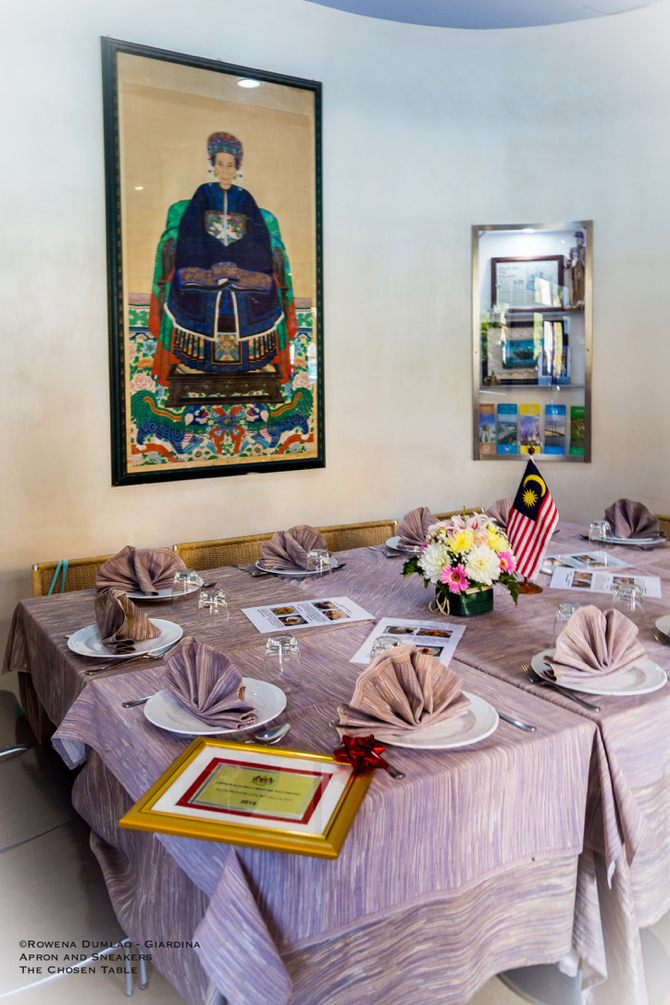Revealing the Flavors of Malaysia at Court Delicati Restaurant in Rome, Italy
Malaysia is geographically separated by the South China Sea into two similarly sized regions: Peninsular Malaysia and East Malaysia (Malaysian Borneo) and 878 islands. Peninsular Malaysia, where the capital Kuala Lumpur is located, shares a land border with Thailand while East Malaysia shares a land border with Brunei and Indonesia. For the rest, the country is surrounded by water.
The country is one of the world’s top holiday tropical destinations because it has a multitude of attractions starting with its hundreds of picturesque islands with their pristine beaches, huge diversity of flora and fauna including rare and endemic species, well-preserved landscape including one of the world’s oldest tropical rainforests, rich tapestry of cultures and history, world-class modern facilities and its cornucopia of food delicacies.
Malaysian cuisine, how well do we know it?
An eclectic gastronomy influenced by the multi-ethnic makeup of its population, due to historical migrations, geographical colonization of foreign countries and immediate geographical connections to its neighboring countries, the Malaysian cuisine is a montage of extensive characteristics of the kitchens of its three oldest major civilizations: Indian, Chinese and Malay. Minor influences follow suit from Thai, Indonesia, Arab, Portuguese, Dutch and British kitchens, as well as its two unique ethnic communities of Sabah and Sarawak. Having these influences from other cultures, the traditional Malaysian dishes are distinctly complex and fascinating.
With the tropical climate, the vegetables and fruits are completely different from what the colder western side yields. Plus, they are available all year round because of the absence of the four seasons. In a tropical country, the climatic condition is just wet (rain) and dry (no rain) periods with constant temperature and high humidity.
In conjunction with the Malaysia Week, the Embassy of Malaysia in Rome celebrated a two-day event called Sapori della Malesia for the discovery of the flavors of the cuisine. The opening of the event was graced by the presence of Malaysian Ambassador Abdul Malik Melvin Castelino Anthony wherein he presented a plaque of recommendation to Court Delicati Restaurant, a place where you can try genuine Malaysian food. Chef Abang Rahman, the President of Kuching Chef Association and chef of Court Delicati, prepared four of the country’s most common traditional dishes, the Nasi Lemak Beef Rendang, Laksa Sarawak, Char Kuey Teow, and Sago Gula Melaka.
Nasi Lemak Beef Rendang. Considered as Malaysia’s national dish, Nasi Lemak is a fragrant rice dish cooked in coconut milk and screwpine leaf. It is traditionally served for breakfast (but it can also be eaten for lunch or dinner) then served with peanuts, boiled egg, anchovies, cucumber, sambal, beef rendang, chicken or fish. Beef Rendang is a deliciously rich spicy and tender beef stew cooked with various spices and coconut milk.
Laksa Sarawak. A spicy soup consisting of rice vermicelli noodles, strips of omelette, shredded chicken, prawns, beansprouts, fresh coriander and lime. Laksa paste is made of dried chilies, tamarind, lemongrass, herbs, spices and coconut milk.
Char Kuey Teow. This is a dish composed of flat rice noodles fried in garlic and sweet soy sauce then mixed with eggs, fishcakes, beansprouts and cockles.
Sago Gula Melaka. A typical sweet Malaysian dessert composed of sago pudding made by boiling the sago with water or milk with sugar then drenched in creamy coconut milk and palm sugar syrup.
Char Kuey Teow. This is a dish composed of flat rice noodles fried in garlic and sweet soy sauce then mixed with eggs, fishcakes, beansprouts and cockles.
Sago Gula Melaka. A typical sweet Malaysian dessert composed of sago pudding made by boiling the sago with water or milk with sugar then drenched in creamy coconut milk and palm sugar syrup.
Embassy of Malaysia
Via Nomentana, 297
00198 Rome, Italy
00198 Rome, Italy
Court Delicati Restaurant
Viale Aventino 39/41/43
00153 Rome, Italy
Tel: +39 06 5746108
Facebook: https://www.facebook.com/CourtDelicati/













